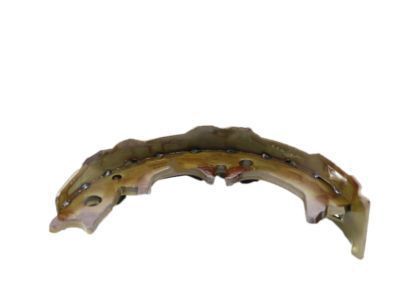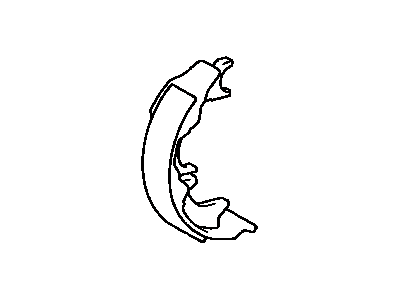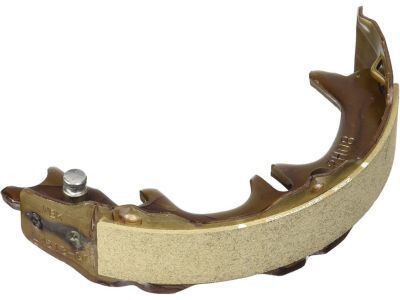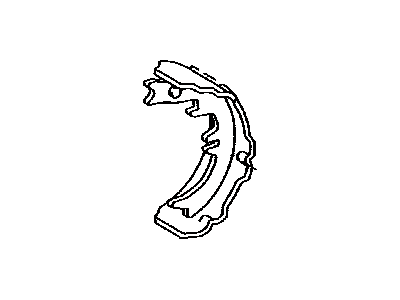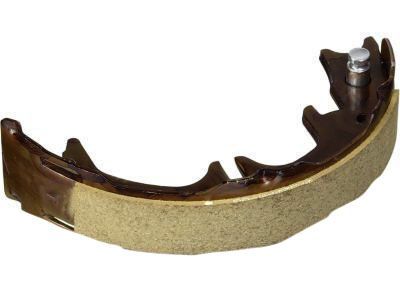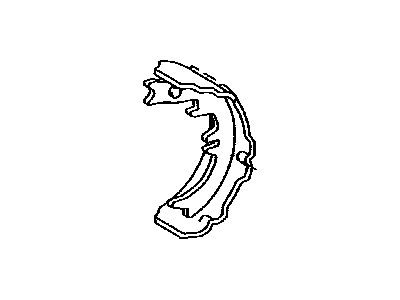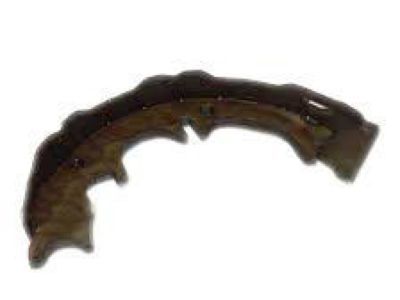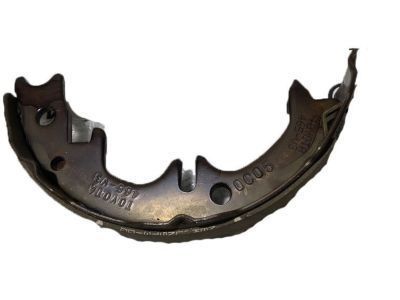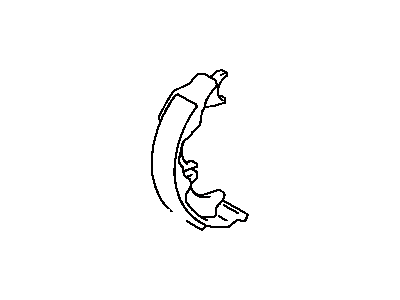

My Garage
My Account
Cart
Genuine Toyota Avalon Brake Shoe Set
Brake Shoe- Select Vehicle by Model
- Select Vehicle by VIN
Select Vehicle by Model
orMake
Model
Year
Select Vehicle by VIN
For the most accurate results, select vehicle by your VIN (Vehicle Identification Number).
7 Brake Shoe Sets found
Toyota Avalon Shoe Assembly, Parking Brake, LH
Part Number: 46540-20070$34.50 MSRP: $48.22You Save: $13.72 (29%)Ships in 1-2 Business DaysToyota Avalon Shoe Assembly, Parking Brake, LH
Part Number: 46590-06020$39.14 MSRP: $54.71You Save: $15.57 (29%)Ships in 1-3 Business DaysToyota Avalon Shoe Assembly, Parking Brake, RH Or Center
Part Number: 46550-06020$39.14 MSRP: $54.71You Save: $15.57 (29%)Ships in 1-3 Business DaysToyota Avalon Shoe Assembly, Parking B
Part Number: 46540-06030$31.17 MSRP: $43.57You Save: $12.40 (29%)Ships in 1-3 Business DaysToyota Avalon Shoe Assembly, Parking Brake, LH
Part Number: 46540-07010$34.50 MSRP: $48.22You Save: $13.72 (29%)Ships in 1-3 Business DaysToyota Avalon Shoe Assembly, Parking Brake, RH Or Center
Part Number: 46550-07010$34.50 MSRP: $48.22You Save: $13.72 (29%)Ships in 1-3 Business DaysToyota Avalon Shoe Assembly, Parking Brake, LH
Part Number: 46590-07010$38.43 MSRP: $53.71You Save: $15.28 (29%)Ships in 1-3 Business Days
Toyota Avalon Brake Shoe Set
If you are in demand for superior quality and affordable OEM Toyota Avalon Brake Shoe Set, then shop with us! We own a wide range of the reduced-priced genuine Toyota Avalon Brake Shoe Set. You can purchase in confidence as all parts come with a manufacturer's warranty. Any issues with our products? No need to worry as we have a hassle-free return policy to guide you every step of the way.
Toyota Avalon Brake Shoe Set Parts Questions & Experts Answers
- Q: How to Replace the Brake Shoe Set on a 1997-2001 Toyota Avalon?A:Whenever one replaces brake shoes, it is important to replace the return and hold-down springs because they tend to lose tension over time which may make the shoes to drag on the drum and wear out prematurely. Firstly, loosen wheel lug nuts and raise rear of vehicle securing it with jackstands while blocking front wheels to prevent rolling. After that release the parking brake and remove the wheel. All four rear brake shoes should be replaced at once when working on one brake assembly avoiding part mix-up. Please follow this procedure of replacing a brake shoe, ensuring proper cleaning of the assembly without using compressed air and removing such parts as return spring, hold-down spring among others as directed in Figure 6-29. Then remember to ensure that parking brake is completely released when pulling off the brake drum; if you still cannot pull it off then retract the brake shoes with adjuster star wheel and screwdrivers. Once that is done, check for cracks, score marks, scratches or hard spots on the drum and where necessary resurface or replace if worn beyond resurfacing limits. Next install the brake drum, wheel, lug nuts again lower vehicle down to ground level and tighten lug nuts. Finally adjust brakes by making forward stop reverse stop operations with parking brake until good pedal action is achieved. Before taking your vehicle for a drive make sure you test thoroughly the operation of your brakes.
Related Toyota Avalon Parts
Browse by Year
2018 Brake Shoe Set 2017 Brake Shoe Set 2016 Brake Shoe Set 2015 Brake Shoe Set 2014 Brake Shoe Set 2013 Brake Shoe Set 2012 Brake Shoe Set 2011 Brake Shoe Set 2010 Brake Shoe Set 2009 Brake Shoe Set 2008 Brake Shoe Set 2007 Brake Shoe Set 2006 Brake Shoe Set 2005 Brake Shoe Set 2004 Brake Shoe Set 2003 Brake Shoe Set 2002 Brake Shoe Set 2001 Brake Shoe Set 2000 Brake Shoe Set 1999 Brake Shoe Set 1998 Brake Shoe Set 1997 Brake Shoe Set 1996 Brake Shoe Set 1995 Brake Shoe Set
